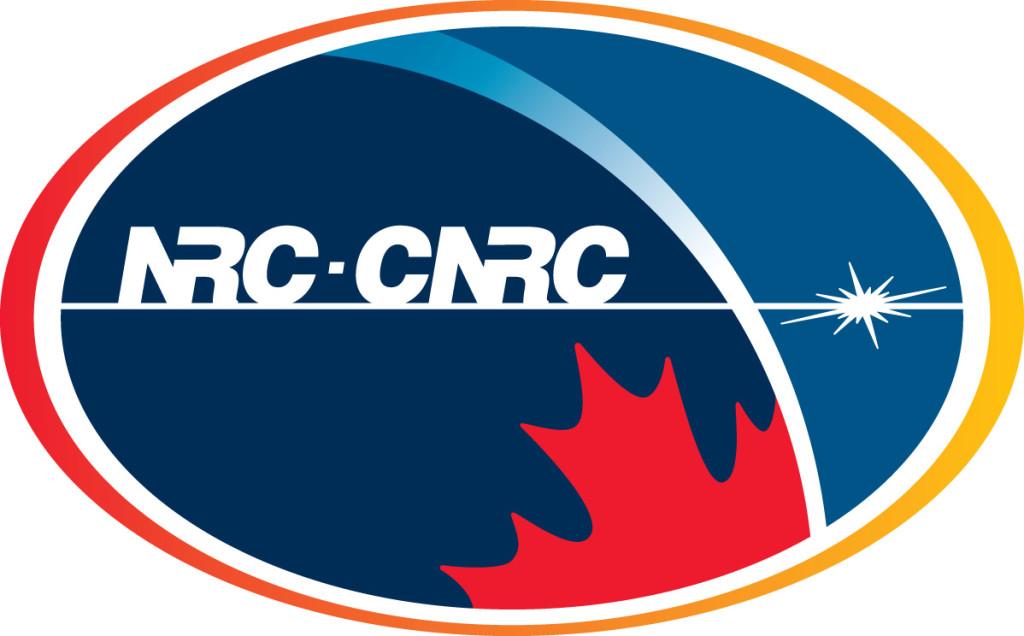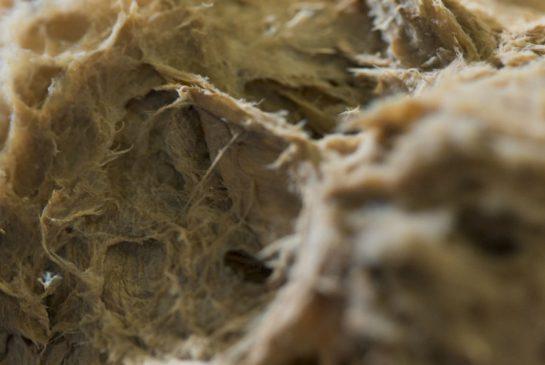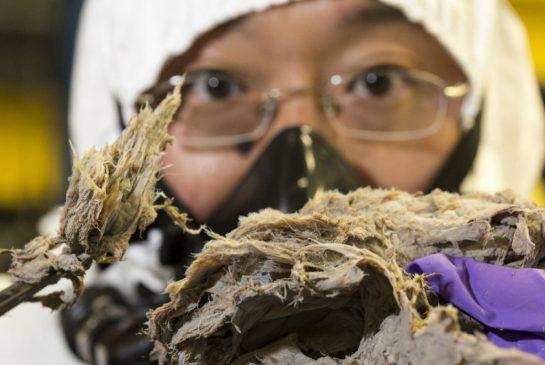BNNTs: Canada’s NRC Sees Future for Boron Nitride Nanotubes in 3D Printing Due to High Heat Tolerance
 One of the most topical misconceptions about 3D printing today is that all you can produce are little plastic parts. From your desktop at home that may be what you want to start with as you learn to use that amazing piece of hardware that layer by layer is capable of fabricating an object of your own design, through digital magic and melted filament. What most of us are concentrated on is the sheer genius in the hardware itself—while the true magic actually lies in the materials. And yes, indeed we have come a long way from plastic.
One of the most topical misconceptions about 3D printing today is that all you can produce are little plastic parts. From your desktop at home that may be what you want to start with as you learn to use that amazing piece of hardware that layer by layer is capable of fabricating an object of your own design, through digital magic and melted filament. What most of us are concentrated on is the sheer genius in the hardware itself—while the true magic actually lies in the materials. And yes, indeed we have come a long way from plastic.
We follow many different spectacular innovations—from the bioprinting of intricate blood vessels for the eventual fabrication of organs to 3D printed components that are able to thrust a rocket into space. Those of course are just two examples out of a list that grows daily. But what makes them all so possible? Materials. And we aren’t just talking plastic. Neither, for that matter, are scientists in Canada. Busy rocking the world with nanostructures at the atomic level, they are about to take materials far into the future for many components—but also adding to the list of what we can put into our 3D printers.
While carbon nanotubes were created in the ’90s, allowing us to benefit in many ways from their extraordinary and unique structures, a huge new economy opened up that most probably aren’t even aware of. Today, the carbon nanotube is responsible for a multimillion dollar market due to its strength and ability to conduct electricity—all exponentially superior to anything else, like steel or copper.
But that’s about to expand much further, as the National Research Council of Canada furthers their production of a nanotube in boron nitride form. These lightweight structures, known as BNNTs, do not generally conduct electricity, but are of extreme interest to many due to their tubular structure and extremely high tolerance to heat (up to 800° C), withstanding double the temperatures of carbon nanotubes.
Discovered as far back as 1944 by Marvin Cohen, a materials scientist at the Lawrence Berkeley National Laboratory in California, we have not seen BNNTs emerge onto the scene for use in manufacturing until now, and the Canadians are indeed leading the way, although other companies are showing interest in producing and selling the material which is unique in shape and resulting rigidity.
“If you apply force outside of a two-dimensional sheet, it has no strength,” said Chris Kingston, a materials scientist at Canada’s National Research Council. “But it gains stiffness when it is reinforced as a tube, and you gain these amazing mechanical properties as a result of this shape.”
While both carbon nanotubes and BNNTs are superior due to their tubular strength, BNNTs are able to act as strong insulators, and can even be produced in transparent or dyed colors—rather than just the basic black associated with carbon nanotubes—offering a wide range of options in making crucial components for industries like aerospace and automotive.
“We have great hope in developing a new type of more resistant glass and integrating that into anything requiring transparency,” he said. “Take a windshield on an aircraft. It’s thick, heavy. You can imagine making this type of glass much thinner and therefore lighter, meaning a lighter plane overall that uses less fuel.”
But this tolerance to heat also has a downside as it makes the materials somewhat difficult to work with as well.
“For any application that requires flame resistance, the material is fantastic,” said Benoit Simard, a principal researcher in the emerging technologies division of the NRC.
However, while the material is easily accessible and affordable, manipulating the BNNTs into shapes such as the desired cylinder is an arduous and expensive process, requiring incredibly high temperatures and enormous amounts of pressure.
 Because of this, the NRC has only made small batches of the material so far, despite having a deal on the table that involves a 20-year manufacturing agreement with Quebec’s Tekna, with plans to provide them BNNTs that they will sell to customers in defense, security, aerospace, biomedical and the automotive sectors.
Because of this, the NRC has only made small batches of the material so far, despite having a deal on the table that involves a 20-year manufacturing agreement with Quebec’s Tekna, with plans to provide them BNNTs that they will sell to customers in defense, security, aerospace, biomedical and the automotive sectors.
With 3D printing, however, it would seem that the conditions for using BNNTs may be a close and suitable match—not so with carbon nanotubes generally, that cannot tolerate the heat involved with melting and liquefying powders. The potential seems enormous however.
“No one has done this,” says Roy Whitney, president and chief executive officer of BNNT, LLC, a company based in Newport News, VA—and one that is working to give the Canadians a run for their money already as this industry begins to gear up.
Whitney, not surprisingly, projects that within a decade, BNNTs will be used just as commonly as carbon nanotubes. As additive manufacturing takes the lead, it will be indeed be interesting to see how the relatively new technology and materials meld, offering a host of benefits in production and materials as BNNTs can also work to give strength to plastics, ceramics, and metal while offering lighter weight overall.
Potential components and innovations for BNNTs include:
- Energy harvesting – Because of their ‘piezoelectric properties,’ BNNTs can actually begin to generate a current when under mechanical stress. Automated sensors, motors and other energy generating devices could be created to work under extreme conditions.
- Transparent armor – BNNTs may prove useful to the military for items like shields for both vehicles and soldiers, as well as offering benefit due to their insulation and protection against radiation. The NRC is currently working with the Department of Defense on these concepts.
- Fire-retardant products – This would seem to be a logical idea, especially for production of insulation, packaging, and clothing.
- Eliminating cancerous tumors – Amazingly, researchers have found that with the addition of small BNNT strands to tumors, cancer cells can be zapped. This happens during irreversible electroporation, using electrical pulses that cause cancer cells to die. It is thought that BNNTs may promote this process further in strengthening the electric fields.
- Hydrogen storage – BNNTs may work to store large volumes of hydrogen, and then would be able to offer power for vehicles.
- Desalination of water – Because BNNT material can reject nearly all the salt in a solution, it was reported previously by researchers in Australia that this might be a viable and very effective new way of desalinating.
- Power generation – Because ‘osmotic flow’ between BNNTs produces incredibly strong currents, it’s thought that they may be helpful in working to create clean electricity.
The list of features and benefits that could potentially be offered with BNNTs is incredibly impressive, so one could see why the National Research Council of Canada is working to keep a hold on what could quickly become a burgeoning new industry.
“We hope to keep the lead,” said Simard, who says they are working to stay ahead of the competition. “Interest is growing.”
Do you think this new material has the potential to surpass the carbon nanotube industry? Discuss in the BNNTs Have Potential in 3D Printing forum over at 3DPB.com.
[Source: The Star]Subscribe to Our Email Newsletter
Stay up-to-date on all the latest news from the 3D printing industry and receive information and offers from third party vendors.
You May Also Like
3D Printing Unpeeled: New Arkema Material for HP, Saddle and Macro MEMS
A new Arkema material for MJF is said to reduce costs per part by up to 25% and have an 85% reusability ratio. HP 3D HR PA 12 S has been...
3D Printing News Briefs, January 20, 2024: FDM, LPBF, Underwater 3D Printer, Racing, & More
We’re starting off with a process certification in today’s 3D Printing News Briefs, and then moving on to research about solute trapping, laser powder bed fusion, and then moving on...
3D Printing Webinar and Event Roundup: December 3, 2023
We’ve got plenty of events and webinars coming up for you this week! Quickparts is having a Manufacturing Roadshow, America Makes is holding a Member Town Hall, Stratafest makes two...
Formnext 2023 Day Three: Slam Dunk
I’m high—high on trade show. I’ve met numerous new faces and reconnected with old friends, creating an absolutely wonderful atmosphere. The excitement is palpable over several emerging developments. The high...

































